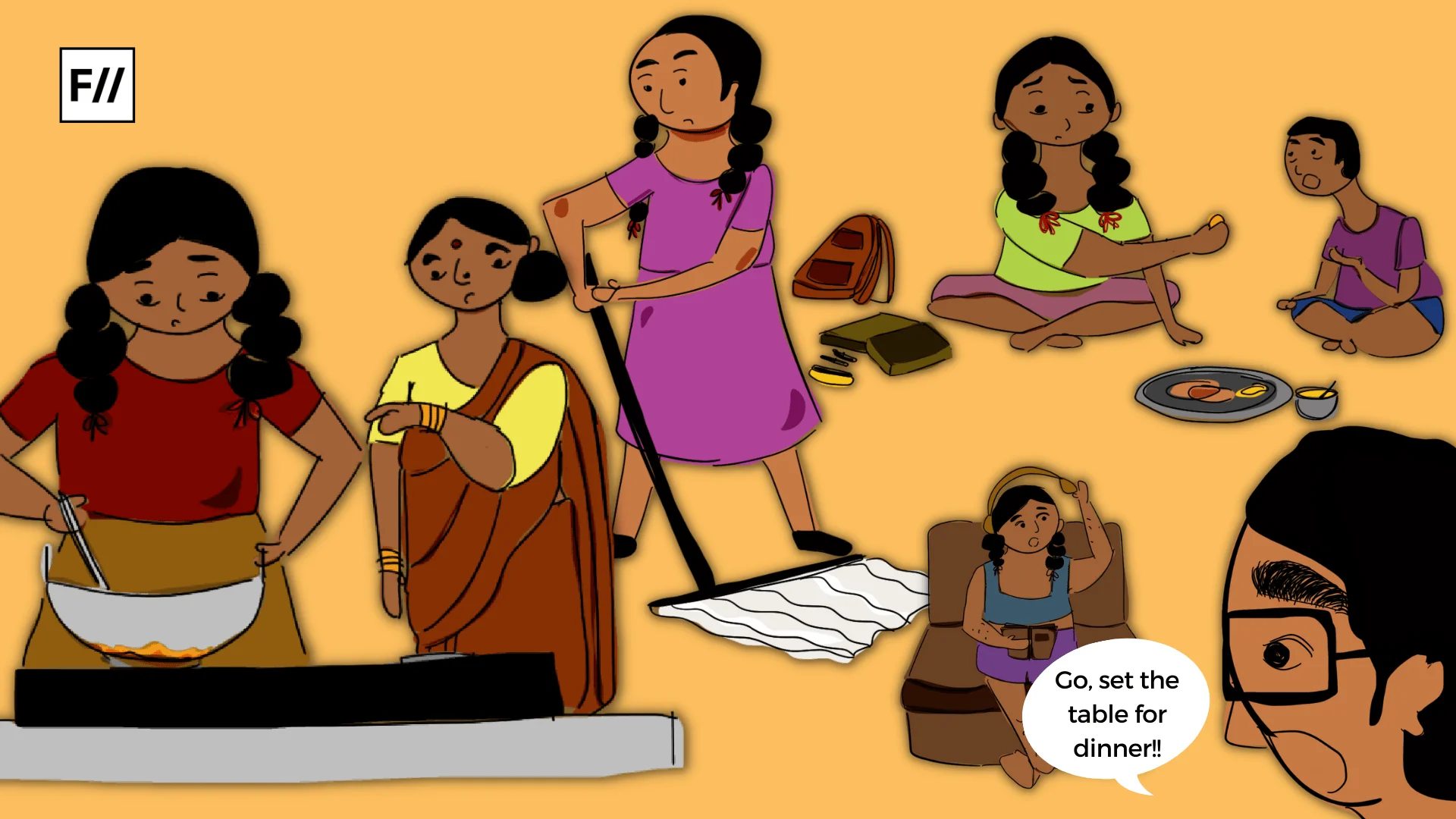On 6th November 2025, the New York Times (NYT) published an opinion piece titled “Did women ruin the workplace?” by Ross Douthat. The contents of this piece aside, the headline in itself drew severe backlash which prompted NYT to substitute the headline with an equally jarring alteration- “Did Liberal Feminism Ruin the Workplace?”. The opinion piece provides a transcript of Mr Douthat’s podcast titled “Interesting Times” with guests Helen Andrews and Leah Libresco Sargeant who describe themselves as conservative writers and critics of feminism. The three thinkers essentially try to paint an idea of what the role of gender should look like in right-wing politics.
When we look past the backlash and outrage to dissect the core of what the opinion piece is targeting to achieve, it becomes evident that feminist thinkers today have to address the elephant in the room – can feminism and conservatism go hand in hand?
Understanding the core values of conservatism and feminism
As a political ideology, conservatism, which falls on the right of the political spectrum, believes in keeping traditions and customs alive within existing political institutions. It is the idea of prioritizing virtue over freedom. The understanding of what virtues an individual embodies and what freedoms they are entitled t o has to be perceived from an intersectional lens, even in conservative ideologies. For example, Conservative beliefs hold that women are born to embody the virtue of motherhood and to be nurturers for the family. Meanwhile, men are promoted to embody the virtues of being providers and protectors. By extension, the freedoms that men are entitled to far outweigh the freedoms women are given. At its core, conservatism believes in re-enforcing traditional gender roles which are deeply rooted in patriarchal ideologies.
Conservative beliefs hold that women are born to embody the virtue of motherhood and to be nurturers for the family. Meanwhile, men are promoted to embody the virtues of being providers and protectors. By extension, the freedoms that men are entitled to far outweigh the freedoms women are given. At its core, conservatism believes in re-enforcing traditional gender roles which are deeply rooted in patriarchal ideologies.
Meanwhile, feminism as a political ideology falls on the left of the political spectrum and advocates for political, social, and economic equality between genders. Feminism, through its various waves, has consistently advocated for equity and equal opportunity, adapting to the changing nature of the world around us.
At first glance, conservatism and feminism seem to have very little in common. However, Conservative Feminism, as a response to Liberal Feminism, has existed since postfeminism.
Defining Conservative Feminism
The core belief that conservative feminism holds is that men and women are different and thereby can never be equal. Further, it believes that there are naturally masculine traits and naturally feminine traits. True liberation for conservative feminists is when women embrace feminine traits like motherhood and nurturing the responsibility of family.

So what is the difference between conservative feminists and traditionalist right-wing supporters? Simply put, it is the willingness to embrace the word “Feminism”. The United States Republican Vice Presidential nominee during the 2008 elections, Sarah Palin still is the poster child for this label. Palin often referred to herself as a feminist, a term that Republican politicians have often distanced themselves from. However, Palin’s idea of feminism was that women were meant to “have it all” and if women could not be caregivers and mothers while also having careers, they were not complete. Palin’s ideology, while being labelled as a form of feminism, devalues feminism and moves away from equality between genders by not imposing a similar burden on men. Conservative feminism, in the postfeminism era, is a consolation prize to feminists. It rests on the assumption that feminism has proved its point – we have achieved some semblance of equality. So we can now go back home and continue to stay within the bounds of our patriarchal roles. The propagation of this ideology, especially in the workplace, ruins the landscape for women by telling us that even though we have earned our seat at the table, we do not belong there.
Conservative feminism is ruining the workplace and so much more.
Understanding the rise of Conservative Feminism in today’s geopolitical landscape
The rise of conservative feminism can be seen in parallel to the rise of right-wing populism and authoritarianism in the West, especially in the last decade. A combination of economic insecurity, increased globalization-led immigration and a decline in popularity for left-wing ideologies can be attributed to this new and sustained wave of right-wing populism in the 21st century.
Gender rights and feminist theory do not function in political silos and are deeply impacted by increasing right-wing trends. For example, Italian Prime Minister Giorgia Meloni has openly advocated for neo-traditionalism as a way of life for women and has actively supported organizations that describe themselves as “pro-life” (anti-reproductive care). Prime Minister Meloni’s government has also been opposed to gender and sexual rights. In Hungary, Prime Minister Viktor Orbán through his “Great Replacement” theory advocates for protecting the white population of Europe from increasing brown, Arab and Eastern populations. One of the ways this theory seeks to protect white populations is by forcing Catholic white women to have more children. The Great Replacement theory, therefore, goes hand in hand with curtailing reproductive rights for women in Hungary while also promoting “traditional family values”.
The strongest case for right-wing populism is being experienced in the United States under President Donald Trump’s second term, who himself has been found liable for sexual abuse. The United States, which was once considered a beacon of freedom, has experienced a systematic erosion of women’s rights and gender justice, as a direct consequence of embracing right-wing conservatism.
Increasing right-wing tendencies and conservatism have evidently been a setback for the feminist movement in this century. The offshoot of conservative feminism, however, seems to be garnering increasing support while promoting reduced women’s rights and gender justice as a form of feminism. The seeds of Conservative Feminism were first sown in Western political thought but its presence is also being felt in Asia, and India is not immune to this wave.
Implications of Conservative Feminism in India
Over the last decade, India has also experienced a shift towards right-wing populism. In the Indian context, this has meant a push towards embracing Hindutva culture (which is a nationalist political ideology different from the majority religion in India: Hinduism) as progressive and integral to the identity of being Indian. This new Indian identity has also platformed women as Devis (goddesses) in a push to adopt more “traditionalist” approaches to being feminine.
Increasing right-wing tendencies and conservatism have evidently been a setback for the feminist movement in this century. The offshoot of conservative feminism, however, seems to be garnering increasing support while promoting reduced women’s rights and gender justice as a form of feminism.
For example, institutions in India continue to push marriage identifiers as a form of empowerment for women. Recently, a Pune District Court Judge chastised a woman for not wearing sindhoor and mangalsutra and identified it as the reason her husband lost interest in the marriage. This has only been an addition to already existing judicial orders classifying not bearing symbols of marriage as cruelty towards the husband. There is also an increasing push towards painting motherhood as a national duty without providing the ecosystem to support young mothers and caregiving. All while there is very little being done to address systemic violence against women. Moreover, conversations around oppression of women are quickly being turned into a whataboutery of hardships faced by men (also imposed by the patriarchy). Such conversations once again promote narratives of men being providers while modern women are not “nurturing” enough.
The conversations around the role of women in right-wing populist India indicate a growing pressure on women to adopt more traditionalist identities and images. This is not officially termed as ‘conservative feminism’ in India but is still a strong indicator of the growth of this ideology in the Indian context today. It is also an indicator that feminist narratives in India might take a conservative tone to appease the current political climate, as is evident from Western case studies.
Feminism as an ideology has continually been redefined since its inception. For feminists of every generation, it has been an honourable responsibility to further the evolution of the definition of feminism and align it with the motivation to systematically dismantle the patriarchy and liberate women as an oppressed class. For feminists in India today, it is crucial to check narratives of conservatism within feminism that pretend to further equality but only fuel patriarchal narratives. The feminist movement in India has made great strides towards empowering and uplifting Indian women, which could be compromised if the trap of conservative feminism remains unchecked in mainstream narratives.




